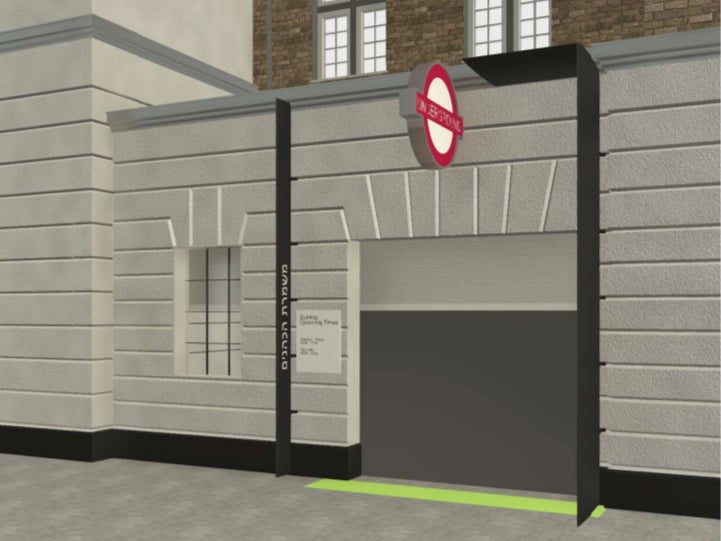Council rejects Jewish sect’s planning application that would finally allow them to travel on the London Underground
The planning statement said that the proposed secondary roof would break up the one roof phenomenon
Your support helps us to tell the story
From reproductive rights to climate change to Big Tech, The Independent is on the ground when the story is developing. Whether it's investigating the financials of Elon Musk's pro-Trump PAC or producing our latest documentary, 'The A Word', which shines a light on the American women fighting for reproductive rights, we know how important it is to parse out the facts from the messaging.
At such a critical moment in US history, we need reporters on the ground. Your donation allows us to keep sending journalists to speak to both sides of the story.
The Independent is trusted by Americans across the entire political spectrum. And unlike many other quality news outlets, we choose not to lock Americans out of our reporting and analysis with paywalls. We believe quality journalism should be available to everyone, paid for by those who can afford it.
Your support makes all the difference.A council has rejected a multi-million pound scheme from a Jewish religious sect that would have allowed its members to use the London Underground.
In plans submitted to Chelsea and Kensington council’s planning committee, a “secondary roof” would be installed at the entrance to South Kensington station, to create a degree of separation from the nearby Science Museum.
If given permission by the council this would have allowed members of the Kohanim to use the station. They are currently unable to do so as the Science Museum contains human remains.
A statement submitted with the planning application said: “They [ the Kohanim] have special rules and guidelines on how to behave that still go on until this day in age.
“One of them is, not to come in any shape or form in contact with a deceased (exceptions are made for immediate family), even not being under one roof.”
The museum shares the same roof as the underground meaning that the Kohanim cannot use “the whole underground line that runs past or connects to that entrance”, as it is associated with a dead body.

The planning statement said that the proposed “secondary roof” would break up the “one roof phenomenon” and “it will allow those deprived from using this great service called the Underground, to be able to use it.”
The following words would be “etched” into the structure at eye-level. They would say: “A Cohen (a person of priestly lineage) is forbidden to allow himself to become contaminated with negative spiritual forces, such as those emanating from a corpse. One of the ways of these forces being transmitted is by being under the same roof as the corpse, and therefore a Cohen must avoid entering any covered area containing one.

“‘Science Museum’ has several body-parts which fall within this category and therefore a Cohen cannot enter the museum. However, any protrusions on the outside of the building which are connected to the covered area of the museum can carry and extend the negative spirit and can prevent a Cohen accessing not only this station but any underground station as they all connect to each other.
“The device attached to this doorway breaks the connection with the museum, thereby permitting a Cohen to enter the station.”
There were a number of objections to the proposal, with locals citing the “inharmonious” design of the secondary roof and that it was an “alien addition” to the Grade II listed building.
The Knightsbridge Association the proposal was “incongruous” and “out of keeping with the listed aspects of the original entrance to the tunnel”. It added that the archway appeared to block part of the public highway.
Council planners rejected the proposals, citing the “size, design, and position” of the secondary roof and the “irreparable harm” it would cause the Grade-II listed building. It added that the “public benefits would not outweigh the harm”.
According to the Science Museum website it has 4,351 human remains from various different countries, including “skeletal material, mummies, artefacts incorporating remains and slides containing human tissues.”

Join our commenting forum
Join thought-provoking conversations, follow other Independent readers and see their replies
Comments